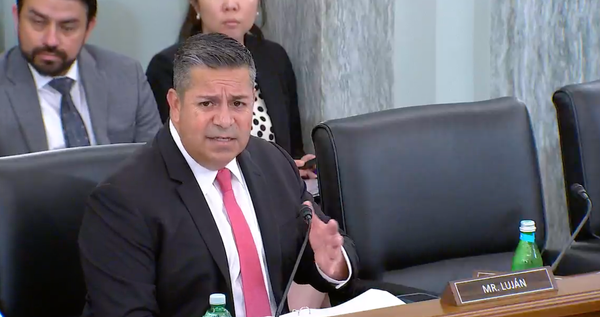Even Among Supporters, Broadband Plan Is In Eyes of Beholder
SAN MATEO, Calif., May 11, 2009 – With the FCC working on a national broadband strategy, many longtime boosters of the plan used a Monday panel at the 2009 Tech Policy Summit to debate what exactly it means to them in terms of speed or technology, and the effect of working with a new administration
SAN MATEO, Calif., May 11, 2009 – With the FCC working on a national broadband strategy, many longtime boosters of the plan used a Monday panel at the 2009 Tech Policy Summit to debate what exactly it means to them in terms of speed or technology, and the effect of working with a new administration that is listening and interested.
It might not be necessary to have 100 megabits of broadband to every home, said Free Press general counsel Marvin Ammori, responding moderator Geoff Daily’s question on a minimum speed for a national network.
A national strategy should “look to the emerging global standard,” said Columbia Telecommunications Corporation president Joanne Hovis. China is “seriously investing” in a pure fiber network to serve its huge population, she said. The U.S. would do well to follow suit, she said. “We have to be thinking about standards and technologies that can scale.”
But building a strategy requires having a baseline to start from, Ammori said. “If we’re going to have a goal, we need to have a way to measure that goal,” he said. The last two years of discussions have been little more than “muddling along” with bad data. The inaction was akin to “putting our heads in the sand and wanting things to get better.”
The state of the “middle mile” bandwidth market remains a looming concern, said Level 3 Communications’ Vice President for Public Policy. “[Companies] aren’t going to invest in Dubuque, Iowa,” he said, suggesting middle-mile infrastructure should be thought of in a similar way to the interstate highway system. “All we should be doing is building big, dumb pipes.”
Ammori pragmatically admitted the finite amount of money available in the stimulus package means plans must be realistic going forward. Some homes simply may be too expensive to reach with fiber, he said.
AT&T assistant vice president for internet and technology policy Chris Boyer agreed, but suggested demand should determine what kind of speeds are deployed, and where. Some homes may be happy with one megabit of bandwidth, he said. “The ultimate goal [of the policy] needs to reflect the overall makeup of the country,” he said. But a perceived lack of demand shouldn’t be an excuse for lack of deployment, Hovis said.
Hunt was more optimistic about an inevitable rise in demand from increased speeds and more applications. When speed is available to consumers, they will make use of it, he said. “Broadband is going to become an economic way of life — I wouldn’t worry about demand.”









